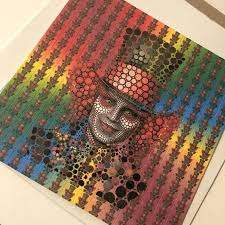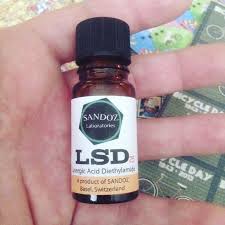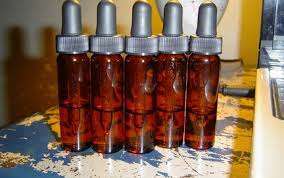
LSD or acid (lysergic acid diethylamide) is the most commonly used hallucinogen (also known as psychedelics). It is considered a typical hallucinogen causing similar effects to other hallucinogens like mescaline, psilocybin (mushrooms), and ibogaine. LSD became popular in the counterculture of the 1960s and 1970s, but since then its use has been limited to people in the Rave or club scenes.
LSD is usually taken by ingesting small tabs of paper (frequently placed under the tongue) which have been soaked in the liquid form of the drug then dried. In rare cases it is taken in a liquid, gelatin, or tablet form. Sometimes a dose is soaked into a sugarcube. Doses range from 20 to 100 micrograms now, though in the 1960s they ranged from 100 to 200 micrograms. Because LSD is produced illegally, it is difficult to know how strong a dose is. The effects of the drug begin in about 30 minutes and last up to 12 hours. It can be very difficult to sleep if LSD has been taken in the last 6 hours.
LSD, like other hallucinogens, produces a distortion in the user’s sense of reality, including images, sounds, and sensations that do not really exist. These hallucinations can be pleasurable and for some people even intellectually stimulating, but they can also be disorienting or disturbing and result in a negative emotional experience (bad trip). It is difficult to determine what kind of an experience a person will have on LSD because the same person can have very different experiences each time. As with all drugs, but especially with LSD, a user’s experience is shaped by her previous drug experience, expectations, setting, as well as the neurological effects of the drug.

The most common dangers of LSD result from bad trips, including terrifying thoughts and feelings, despair, fear of losing control, and fear of death. These problems are especially common and severe in people with underlying mental problems like severe depression, schizophrenia, or bipolar disease. Some fatal accidents have also occurred among users who could not perceive the reality of their situation. They hallucinate safe situations when they are actually in danger or are unable to judge distances. You should never operate machinery or drive cars while taking LSD.
Problems that might occur include:
- Extreme changes in behavior and mood; person may sit or recline in a trance-like state
- Chills, irregular breathing, sweating, trembling hands
- Changes in sense of light, hearing, touch, smell, and time
- Nausea, especially in the first two hours
- Increase in blood pressure, heart rate and blood sugar
- Fatigue the next day
Hallucinogens can cause extreme, long-lasting adverse neuropsychiatric effects, like flashbacks (post-hallucination perceptual disorders), relatively long-lasting psychoses, severe depression or shizophrenia-like syndromes, especially in heavy or long-term users or in people with an underlying mental illness.
Some of the long-term problems associated with chronic or heavy LSD use are:
- A person can experience rapidly changing feelings, immediately and long after use.
- Chronic use may cause persistent problems, depression, violent behavior, anxiety or a distorted perception of time.
- Large doses may cause convulsions, coma, heart/lung failure or ruptured blood vessels in the brain.
- “Flashbacks” may occur long after use.


